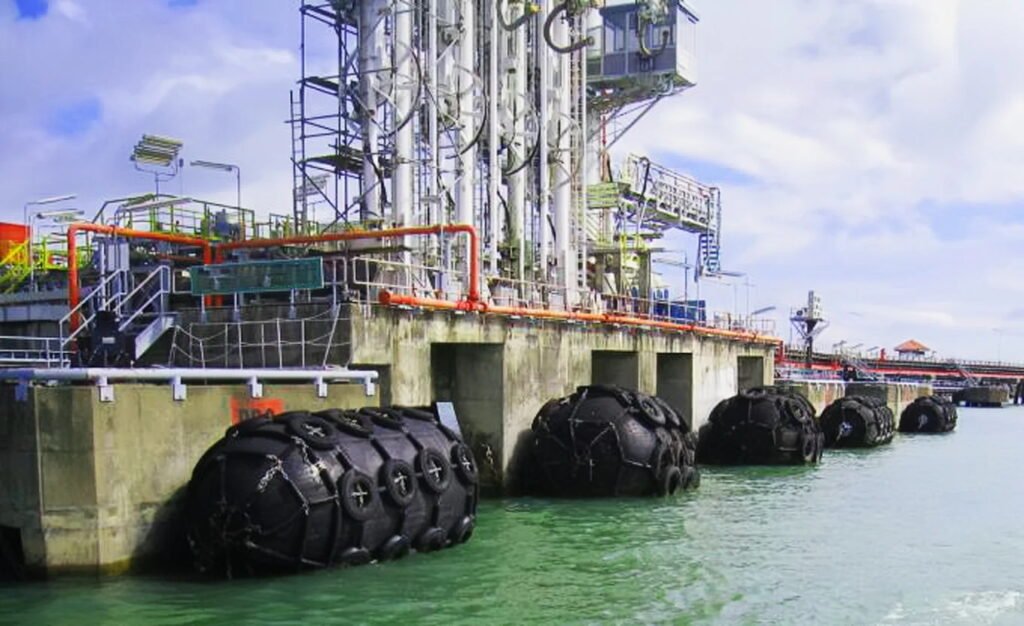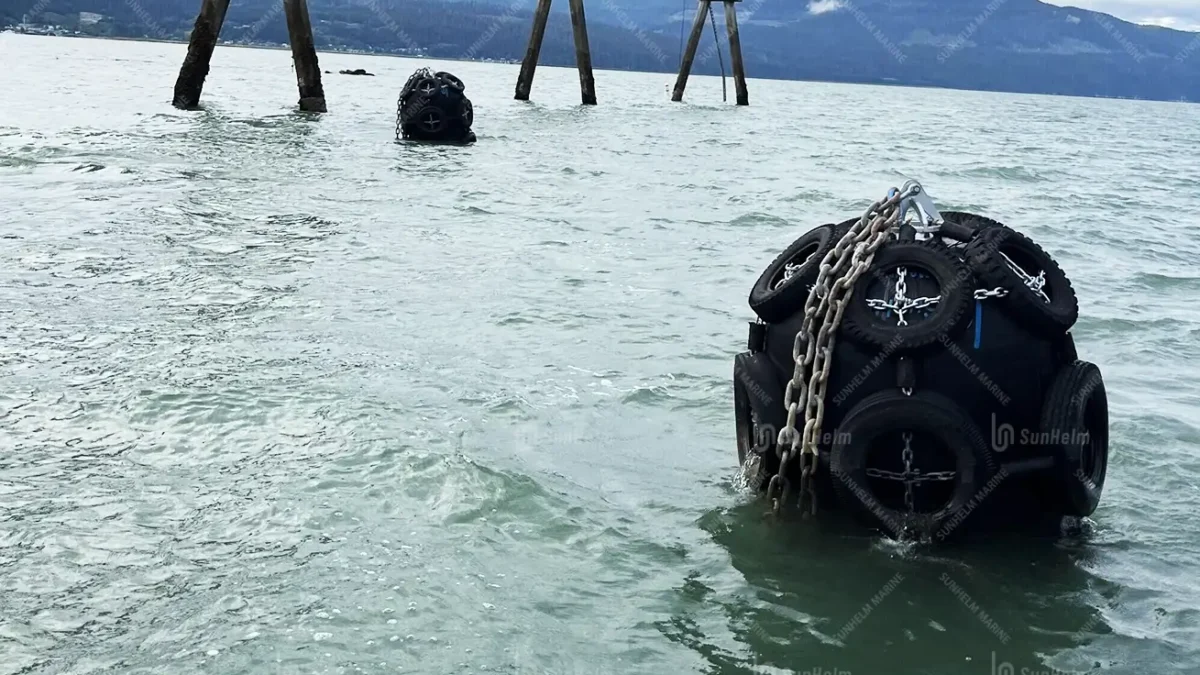1. Why Non-Standard Pneumatic Fenders Are Risky
Using pneumatic fenders that don’t meet ISO 17357 can cause serious problems:
- They may burst or lose air.
If the wrapping is not done right, the inner layers might separate. This can lead to sudden failure. Boats, docks, and people could get hurt. - They don’t absorb shock properly.
Poor-quality rubber fenders won’t protect the ship. The boat may hit the dock hard and get damaged. - They leak.
Air or water can enter between layers. The floating fender will lose strength and won’t last long. - Valves can fail.
Fenders larger than 2.5 m must have a working safety valve. Without it, pressure can rise too high and cause a burst.
This is why ISO 17357 compliance matters. It protects ships, crews, and port equipment.
2. What Is ISO 17357?
ISO 17357 is the main international standard for marine fenders, especially Yokohama-type pneumatic fenders.
It sets rules for:
- Structure and materials:
Each pneumatic rubber fender must have a strong outer rubber layer, cloth layers for strength, and a sealed inner lining. - Types:
Type I uses a chain net. Type II has sling ropes. Both need a strong structure and proper finishing at the bead ring. - Pressure levels:
High-pressure types are either 50 kPa or 80 kPa. - Testing:
All floating fenders must pass compression, puncture, rebound (≥97%), and air-tightness tests. - Markings and valves:
Fenders must show size, pressure, and serial number. Large ones must have safety valves.
3. Sunhelm’s Wrapping Method
3.1 What We Use
At Sunhelm, we make pneumatic fenders using the wrapping method. It means we layer cloth and rubber by hand, then vulcanize the fender. It’s flexible and cost-effective.
3.2 What Could Go Wrong
If done poorly, wrapping can cause:
- Cloth not fully stitched in, which leads to slipping.
- Layers are not sticking well, which lets in air or water.
- Uneven thickness, which weakens the rubber fender.
- Valve problems, which can cause pressure failure.
3.3 What Sunhelm Does Right
- We flip and stitch the cloth properly into the bead ring.
- We test bonding with water and pressure checks.
- We measure thickness with ultrasound tools.
- We use certified valves and do quality checks.
- Each fender is labeled with full traceability.

4. Quality Testing at Sunhelm
Before we ship, every pneumatic fender goes through tests by BV, ABS, or DNV:
- 1,000+ compression cycles.
- Rebound must be ≥97%.
- Puncture test over 19 kN.
- Hold pressure with no leaks.
- Test reports and ISO certificates come with every fender.
5. FAQ – About Pneumatic Fenders
Q1: What is a pneumatic fender?
It’s an air-filled rubber unit that protects ships during docking.
Q2: Why use ISO 17357-certified fenders?
Because it guarantees safety, performance, and long life.
Q3: What pressure do these fenders use?
Usually 50 or 80 kPa. That’s enough to absorb impact energy.
Q4: Type I or Type II – what’s the difference?
Type I has a net cover. Type II has sling ropes. Both are strong.
Q5: Is the ISO certificate enough proof?
No. Ask for test reports and check the fender’s label.
Q6: How do I choose the right marine fender?
Look for ISO marks, real test data, and factory checks.
Q7: Is wrapping better than molding?
Both can work. But wrapping needs more control during production.
Q8: What’s GEA?
It means Guaranteed Energy Absorption. It shows how much shock the fender can take.
Q9: How long does a fender last?
If well-made, up to 10–20 years.
Q10: Do small fenders need safety valves?
Only large ones (diameter over 2.5 m) require it. But valves are always a good idea.
6. Why ISO-Compliant Pneumatic Fenders Matter
- Pneumatic fenders protect ships during docking.
- Pneumatic rubber fenders last longer and reduce repair costs.
- They meet port safety rules.
- They give buyers peace of mind.
Final Thoughts
At Sunhelm, we make strong and safe pneumatic fenders.
We follow ISO rules.
We use the wrapping method with care and check every detail.
Want a safe, certified marine fender?
Get in touch.
We’re ready to help.


